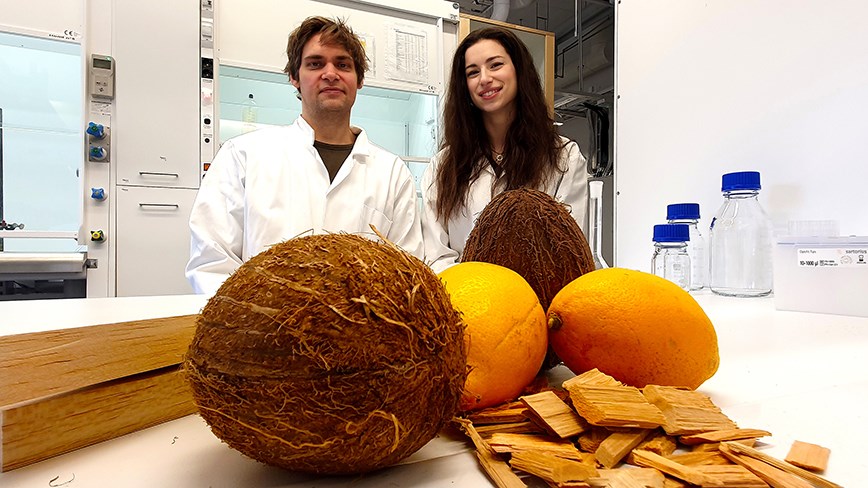[{“available”:true,”c_guid”:”7588f4d9-7ac9-4afd-b51d-f6be6b5f66d2″,”c_author”:”hvg.hu”,”category”:”itthon”,”description”:”A börtönben ülőkért jó imádkozni, különösen azokért, akik ártatlanul ülnek – ezt a témakört járta körül egy ötfős gyerekközönség előtt Böjte Csaba. “,”shortLead”:”A börtönben ülőkért jó imádkozni, különösen azokért, akik ártatlanul ülnek – ezt a témakört járta körül egy ötfős…”,”id”:”20230403_Bojte_Csaba_elmondta_miert_kellett_a_gyerekeknek_imadkozni_Budahazy_bacsiert”,”image”:”https://api.hvg.hu/Img/ffdb5e3a-e632-4abc-b367-3d9b3bb5573b/7588f4d9-7ac9-4afd-b51d-f6be6b5f66d2.jpg”,”index”:0,”item”:”f8414815-95ab-4ac0-9b53-978300f20a7d”,”keywords”:null,”link”:”/itthon/20230403_Bojte_Csaba_elmondta_miert_kellett_a_gyerekeknek_imadkozni_Budahazy_bacsiert”,”timestamp”:”2023. április. 03. 20:40″,”title”:”Böjte Csaba elmondta, miért kellett gyerekeknek imádkozni \”Budaházy bácsiért\””,”trackingCode”:”RELATED”,”c_isbrandchannel”:false,”c_isbrandcontent”:false,”c_isbrandstory”:false,”c_isbrandcontentorbrandstory”:false,”c_isbranded”:false,”c_ishvg360article”:false,”c_partnername”:null,”c_partnerlogo”:”00000000-0000-0000-0000-000000000000″,”c_partnertag”:null},{“available”:true,”c_guid”:”7ab7891c-79ef-4565-b4e7-997cb4482330″,”c_author”:”hvg.hu”,”category”:”vilag”,”description”:”Reagált az orosz külügy a bejelentésre, hogy Finnország kedden az Észak-Atlanti Szerződés Szervezete (NATO) teljes jogú tagjává válik. “,”shortLead”:”Reagált az orosz külügy a bejelentésre, hogy Finnország kedden az Észak-Atlanti Szerződés Szervezete (NATO) teljes jogú…”,”id”:”20230403_Az_oroszok_katonai_erositessel_valaszolnak_a_finnek_NATOcsatlakozasara”,”image”:”https://api.hvg.hu/Img/ffdb5e3a-e632-4abc-b367-3d9b3bb5573b/7ab7891c-79ef-4565-b4e7-997cb4482330.jpg”,”index”:0,”item”:”1aece349-bda5-4185-a361-2d864c2ff1b5″,”keywords”:null,”link”:”/vilag/20230403_Az_oroszok_katonai_erositessel_valaszolnak_a_finnek_NATOcsatlakozasara”,”timestamp”:”2023. április. 03. 19:37″,”title”:”Az oroszok katonai erősítéssel válaszolnak a finnek NATO-csatlakozására”,”trackingCode”:”RELATED”,”c_isbrandchannel”:false,”c_isbrandcontent”:false,”c_isbrandstory”:false,”c_isbrandcontentorbrandstory”:false,”c_isbranded”:false,”c_ishvg360article”:false,”c_partnername”:null,”c_partnerlogo”:”00000000-0000-0000-0000-000000000000″,”c_partnertag”:null},{“available”:true,”c_guid”:”12273bbe-d60e-4154-96cc-f88a60a1911c”,”c_author”:”hvg.hu”,”category”:”itthon”,”description”:”Naponta egy tízperces időablakban van lehetősége a falu lakóinak arra, hogy átvegyék az olyan személyes átvételt igénylő küldeményeket, amiket nem tudtak kikézbesíteni nekik, mert éppen nem voltak otthon.”,”shortLead”:”Naponta egy tízperces időablakban van lehetősége a falu lakóinak arra, hogy átvegyék az olyan személyes átvételt…”,”id”:”20230403_kaptalanfa_magyar_posta_kezbesites_mobilposta”,”image”:”https://api.hvg.hu/Img/ffdb5e3a-e632-4abc-b367-3d9b3bb5573b/12273bbe-d60e-4154-96cc-f88a60a1911c.jpg”,”index”:0,”item”:”bc10aa25-e116-4b89-a93e-cb8c060aa588″,”keywords”:null,”link”:”/itthon/20230403_kaptalanfa_magyar_posta_kezbesites_mobilposta”,”timestamp”:”2023. április. 03. 17:41″,”title”:”Csak 10 percük van átvenni hivatalos leveleiket a mobilpostán Káptalanfa lakóinak”,”trackingCode”:”RELATED”,”c_isbrandchannel”:false,”c_isbrandcontent”:false,”c_isbrandstory”:false,”c_isbrandcontentorbrandstory”:false,”c_isbranded”:false,”c_ishvg360article”:false,”c_partnername”:null,”c_partnerlogo”:”00000000-0000-0000-0000-000000000000″,”c_partnertag”:null},{“available”:true,”c_guid”:”326262bf-ce83-45c2-bc90-e3e55fbbe00c”,”c_author”:”hvg.hu”,”category”:”vilag”,”description”:”A vasárnap virradóra történt vandalizmust arra a napra időzítették, amikor Lengyelország harmadik legnagyobb városában katolikus szervezetek ünnepséget és körmenetet tartottak a lengyel születésű néhai pápa emlékére.”,”shortLead”:”A vasárnap virradóra történt vandalizmust arra a napra időzítették, amikor Lengyelország harmadik legnagyobb városában…”,”id”:”20230402_Meggyalaztak_II_Janos_Pal_lodzi_szobrat”,”image”:”https://api.hvg.hu/Img/ffdb5e3a-e632-4abc-b367-3d9b3bb5573b/326262bf-ce83-45c2-bc90-e3e55fbbe00c.jpg”,”index”:0,”item”:”b0933218-d136-4f15-a24c-6085cc50bfb5″,”keywords”:null,”link”:”/vilag/20230402_Meggyalaztak_II_Janos_Pal_lodzi_szobrat”,”timestamp”:”2023. április. 02. 21:20″,”title”:”Leöntötték II. János Pál lódzi szobrát”,”trackingCode”:”RELATED”,”c_isbrandchannel”:false,”c_isbrandcontent”:false,”c_isbrandstory”:false,”c_isbrandcontentorbrandstory”:false,”c_isbranded”:false,”c_ishvg360article”:false,”c_partnername”:null,”c_partnerlogo”:”00000000-0000-0000-0000-000000000000″,”c_partnertag”:null},{“available”:true,”c_guid”:”d927ba8d-0d3a-4ed3-b941-6c72ceb069ff”,”c_author”:”MTI”,”category”:”vilag”,”description”:”Ukrajna 12 állampolgára térhetett haza orosz fogságból, köztük öt súlyosan sérült. “,”shortLead”:”Ukrajna 12 állampolgára térhetett haza orosz fogságból, köztük öt súlyosan sérült. “,”id”:”20230403_Ujabb_ukran_allampolgarokat_engedtek_ki_az_orosz_fogsagbol”,”image”:”https://api.hvg.hu/Img/ffdb5e3a-e632-4abc-b367-3d9b3bb5573b/d927ba8d-0d3a-4ed3-b941-6c72ceb069ff.jpg”,”index”:0,”item”:”7bfcae1b-33b1-4199-b8c3-1a5f2b974262″,”keywords”:null,”link”:”/vilag/20230403_Ujabb_ukran_allampolgarokat_engedtek_ki_az_orosz_fogsagbol”,”timestamp”:”2023. április. 03. 20:55″,”title”:”Újabb ukrán foglyokat engedtek el az oroszok, többen súlyos állapotban vannak”,”trackingCode”:”RELATED”,”c_isbrandchannel”:false,”c_isbrandcontent”:false,”c_isbrandstory”:false,”c_isbrandcontentorbrandstory”:false,”c_isbranded”:false,”c_ishvg360article”:false,”c_partnername”:null,”c_partnerlogo”:”00000000-0000-0000-0000-000000000000″,”c_partnertag”:null},{“available”:true,”c_guid”:”0006aa5e-7559-4d28-83bd-c0e493e0b435″,”c_author”:”MTI”,”category”:”vilag”,”description”:”A Biztonsági Tanács első ülésére az orosz elnökség alatt hétfő reggel kerül sor, a vezetők zárt ajtók mögötti tárgyalásokon döntenek havi munkaprogramjukról. Az orosz küldöttséget Szergej Lavrov külügyminiszter vezeti.\r\n”,”shortLead”:”A Biztonsági Tanács első ülésére az orosz elnökség alatt hétfő reggel kerül sor, a vezetők zárt ajtók mögötti…”,”id”:”20230402_ENSZ_BT_Borrell_orosz_elnokseg_twitter”,”image”:”https://api.hvg.hu/Img/ffdb5e3a-e632-4abc-b367-3d9b3bb5573b/0006aa5e-7559-4d28-83bd-c0e493e0b435.jpg”,”index”:0,”item”:”3dd4911c-addd-483b-8670-042927a94e41″,”keywords”:null,”link”:”/vilag/20230402_ENSZ_BT_Borrell_orosz_elnokseg_twitter”,”timestamp”:”2023. április. 02. 12:07″,”title”:”Josep Borrell: az EU fel fog lépni az ENSZ BT orosz elnöksége alatti esetleges visszaélésekkel szemben”,”trackingCode”:”RELATED”,”c_isbrandchannel”:false,”c_isbrandcontent”:false,”c_isbrandstory”:false,”c_isbrandcontentorbrandstory”:false,”c_isbranded”:false,”c_ishvg360article”:false,”c_partnername”:null,”c_partnerlogo”:”00000000-0000-0000-0000-000000000000″,”c_partnertag”:null},{“available”:true,”c_guid”:”962a2f10-d64d-4dfc-b962-d63f4dd23f18″,”c_author”:”hvg.hu”,”category”:”vilag”,”description”:”A forgószelek olyan államokban csaptak le, mint Illinois, Indiana, Missouri, Arkansas és Alabama.”,”shortLead”:”A forgószelek olyan államokban csaptak le, mint Illinois, Indiana, Missouri, Arkansas és Alabama.”,”id”:”20230402_tornado_USA_halalos_aldozatok_Arkansas_Illinois_video”,”image”:”https://api.hvg.hu/Img/ffdb5e3a-e632-4abc-b367-3d9b3bb5573b/962a2f10-d64d-4dfc-b962-d63f4dd23f18.jpg”,”index”:0,”item”:”18445486-dc18-4b91-9130-d413fd637dd8″,”keywords”:null,”link”:”/vilag/20230402_tornado_USA_halalos_aldozatok_Arkansas_Illinois_video”,”timestamp”:”2023. április. 02. 08:59″,”title”:”Már 26 halálos áldozatot követelt az USA közép-nyugati és déli területin átsöprő tornádósorozat + videók”,”trackingCode”:”RELATED”,”c_isbrandchannel”:false,”c_isbrandcontent”:false,”c_isbrandstory”:false,”c_isbrandcontentorbrandstory”:false,”c_isbranded”:false,”c_ishvg360article”:false,”c_partnername”:null,”c_partnerlogo”:”00000000-0000-0000-0000-000000000000″,”c_partnertag”:null},{“available”:true,”c_guid”:”8006a9d1-27ad-4077-a609-2c2e4641db51″,”c_author”:”hvg.hu”,”category”:”gazdasag”,”description”:”A Mikó István érdekeltségébe tartozó Pannoncorp kötelezettségei ugyanolyan mértékben nőttek, mint a bevételei.”,”shortLead”:”A Mikó István érdekeltségébe tartozó Pannoncorp kötelezettségei ugyanolyan mértékben nőttek, mint a bevételei.”,”id”:”20230403_Csodot_jelentett_a_Dunaferrugy_egyik_erintettjenek_csodtanacsado_cege”,”image”:”https://api.hvg.hu/Img/ffdb5e3a-e632-4abc-b367-3d9b3bb5573b/8006a9d1-27ad-4077-a609-2c2e4641db51.jpg”,”index”:0,”item”:”c4af09db-cd34-4508-92dd-a8f043e8fa03″,”keywords”:null,”link”:”/gazdasag/20230403_Csodot_jelentett_a_Dunaferrugy_egyik_erintettjenek_csodtanacsado_cege”,”timestamp”:”2023. április. 03. 08:11″,”title”:”Csődöt jelentett a Dunaferr-ügy egyik érintettjének csődtanácsadó cége”,”trackingCode”:”RELATED”,”c_isbrandchannel”:false,”c_isbrandcontent”:false,”c_isbrandstory”:false,”c_isbrandcontentorbrandstory”:false,”c_isbranded”:false,”c_ishvg360article”:false,”c_partnername”:null,”c_partnerlogo”:”00000000-0000-0000-0000-000000000000″,”c_partnertag”:null}]


That’s why we ask you, our readers, to support us! We promise to keep doing the best we can!
We recommend it from the first page














































